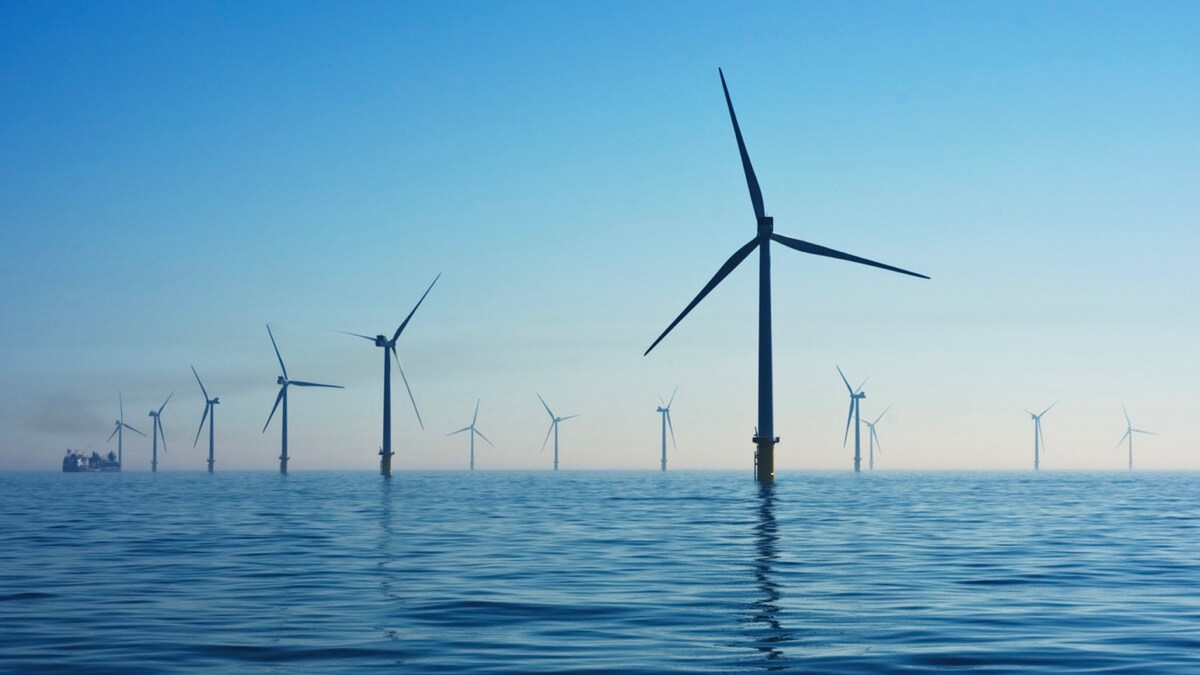
With more than 56,800 wind turbines generating more than 6 percent of the nation’s electricity, wind power is becoming the largest source of renewable energy in the U.S. But, except for the five turbines at the 30-megawatt (MW) Block Island Wind Farm off the coast of Rhode Island owned and operated by Deepwater Wind, the majority of wind power production in the U.S. is happening on land. For comparison, Europe’s offshore wind market clocks in at around 20,000 MW in operation.
But as costs drop, advocates push legislation to create the policy and regulatory environment to advance projects, and experienced European developers look to enter the U.S. market, the elusive U.S. offshore wind boom perpetually on the horizon looks to be within reach. As of April 2018, there were 30 active offshore wind sites in the country and three beginning construction immediately. And in addition to the Block Island Wind Farm, Deepwater Wind has three other projects in development. Ørsted, a Danish company that has built more offshore wind farms than any other developer, is entering the U.S. market with two offshore wind farms: one off the coast of Massachusetts and another off the coast of New Jersey. Other developers hoping to bring the next operational offshore wind farm to U.S. waters include Fisherman’s Energy, Lake Erie Energy Development Company, U.S. Wind and Vineyard Wind. In fact, the U.S. Department of Energy estimates that offshore wind has the potential to generate more than 7,200 terawatt-hours of electricity per year.
As offshore wind projects in the U.S. look increasingly promising, companies across the supply chain are preparing to ride the updrafts. Below are some marketing strategies that they should be employing to help improve their market position, attract more contracts and hire more talent.
Engage the community in which you hope to serve
Those familiar with the history of offshore wind in the U.S. will remember how NIMBY-ism derailed Cape Wind, the farm proposed for Nantucket Sound in 2001. To combat a similar situation, offshore wind marketers should drive the conversation by crafting a positive narrative around their projects and business by placing op-eds in local newspapers and hosting townhalls to educate the community on the benefits of offshore wind energy to facilitate a constructive environment for companies seeking project approval. These efforts will encourage positive associations with your company, ultimately impacting the community’s willingness to support your project. Regional validation is key, so aligning yourself with local partners to help amplify your message is an important tactic to include in your playbook.
Additionally, offshore wind marketers should provide community members with an opportunity to familiarize themselves with the company through positive media headlines or by posting on various social media platforms or neighborhood message boards. Creating simple content such as explainer videos, blogs, infographics and eBooks aimed at dispelling any negative misconceptions of offshore wind development will help steer the conversation in a positive direction and could convert some staunch opponents into advocates, or at the very least, balance the conversation.
Digitally target your desired audience
These days, we live online in our own niche digital social circles. If you’re seeking project approval, buyers of equipment, or even local engineers or contractors, chances are you can find them online. Highly targeted digital marketing strategies like paid social media advertisements on Twitter or LinkedIn, drip-email marketing campaigns or paid search advertisements can be the difference between reaching your exact desired audience and shouting into the void.
Marketing automation tools like HubSpot can help nurture interested parties with targeted, highly relevant and personalized content that keeps your brand top of mind. Augmenting that content with participation in relevant local events, such as festivals and farmers’ markets, can help reinforce your brand’s presence in the communities you will become a part of through your projects.

For too long has the U.S. offshore wind boom been a distant dream. Developers, suppliers and marketers must engage in their projects’ communities, close communication gaps and increase transparency by providing accessible education materials and interacting with their target audiences through highly targeted touch points.
At Antenna Group, we are closely following developments in the offshore wind industry, looking for opportunities to support the public relations, public affairs, community engagement, digital marketing, messaging strategy, brand development and crisis communications efforts surrounding offshore wind projects.
For more information, please complete contact us!